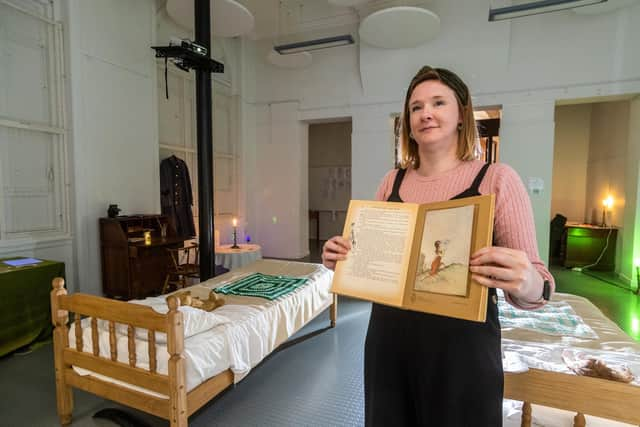Secrets of Yorkshire's most famous hoax - the Cottingley Fairies - revealed in tantalising exhibition
And the childhood bedroom of Elsie Wright has now been recreated for a new exhibition in Leeds Library to inspire a new generation to learn about the Cottingley Fairy hoax.
In 1917, Elsie, along with her cousin Frances Griffiths, took photographs at Cottingley Beck near her home which appeared to show the two girls surrounded by fairies.
Advertisement
Hide AdAdvertisement
Hide AdThe five photographs which were made public in 1919 divided the country, with those insisting the images were real including Sherlock Holmes author Sir Arthur Conan Doyle, whose book The Coming Of The Fairies set out his reasons for believing the two girls.


Kodak refused to issue a certificate of authenticity for the photographs, but other photography experts said they did not believe the images were faked or tampered with.
It wasn’t until the 1980s that Elsie and Frances - by then well into old age - confessed that the images were not real depictions of fairies, but a cleverly designed hoax made from paper cutouts from Princess Mary’s Gift Book.
But until her dying day, Frances still maintained that she truly had seen fairies at the bottom of the garden - and the tale is one that still beguiles to this day.
Advertisement
Hide AdAdvertisement
Hide Ad

The new exhibition, Fairy Light, will see a rare first edition of The Coming of the Fairies appearing alongside another book from the Leeds Libraries’ collections, Princess Mary’s Gift Book, on which Elsie based her own fairy drawings before posing them on hat pins for the photographs.
Artist and folklorist Elizabeth Dearnley, filmmaker Amy Cutler and sound designer Tamsin Dearnley created the exhibition.
All three women have connections with West Yorkshire.
Dr Dearnley said: “My great grandparents used to live in Fairy Dale in Cottingley. It was always part of local legend.
“But I really got interested in the Cottingley fairies as a story last year, when I edited a book on fairies for the British Library.
Advertisement
Hide AdAdvertisement
Hide Ad“The more I looked into it, the more complicated of a story it became.
“I became really fascinated by how the photographs had generated such interest - and how we're still talking about them 100 years on. It’s really interesting to think about what's changed but also what stayed the same 100 years later.
“The photographs were shot towards the end of the First World War, and there’s a lot of connections between belief in the fairies in supernaturalism after we’d all come through this great global trauma.
“People were wanting to believe in things beyond what they can see
Advertisement
Hide AdAdvertisement
Hide Ad“When you ask, well how can people have believed them - if you think about what's been happening recently - I don’t want to say the pandemic is the same. But I think we've seen lots of people looking for information and feeling isolated in terms of not knowing what to believe on social media.
“There’s been a lot of talk about fake news and people not necessarily believing what they read.”
The exhibition also includes a soundscape of discussions the two girls might have had while concocting their famous hoax.
“I’m really fascinated by childhood bedrooms as imaginative spaces - they’re portals to other worlds,” said Dr Dearnley.
Advertisement
Hide AdAdvertisement
Hide Ad“The soundscape is reactive - there’s a camera in the room which affects the sounds that you hear. You can interact with the fairies, and Frances and Elsie whispering so it feels as if you’re in the room with them.”
Leeds Central Library has a treasure trove of fairy books which provide a focal point for the new exhibition.
A full collection of Lang’s Colour Fairy Books - which were the basis for the Edwardian ideal of how fairies looked - is on display, as well as an illustrated Midsummer Night’s Dream with Arthur Rackham’s classic illustrations.
Copies of The Coming of the Fairies and Princess Mary’s Gift Book, both which play a huge role in the Cottingley story, are also on display.
